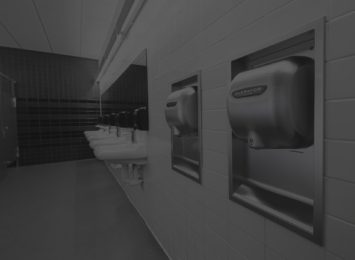UNIVERSITY OF READING GETS GREEN LIGHT TO SAVE ENERGY
The University of Reading, chartered in 1926 and ranked in the top 1 percent according to the QS World University Rankings 2014-2015, has been at the forefront of research into sustainability and the environment for decades. With over 17,000 students from 141 countries and nearly 4,000 members on staff, the university has committed to mitigating its own environmental impact and reducing its carbon footprint by 35 percent by 2016 and 45 percent by 2020.
In order to achieve that goal, the University of Reading has plans to reduce energy and water consumption around campus, increase recycling and reduce waste going to landfills. The Sustainability Team was implemented to raise energy awareness among students and faculty and the Clean and Green Team was created to care for the general appearance of the campus. The University of Reading has also invested significantly in the existing campus infrastructure to ensure its facilities are efficient and environmentally ready for the future. These changes include energy-efficient lighting, heating, cooling and insulation; building management and energy-efficient equipment ranging from IT servers to hand dryers.
RESEARCH PROVIDES A HELPING HAND
Prior to installing new XLERATOReco Hand Dryers throughout the campus, Dan Fernbank, Energy Manager at the University of Reading, reviewed independently verified energy performance data of various high-speed hand dryers. Fernbank has been Energy Manager at the University of Reading since 2011, where he has led their carbon reduction programs, achieving a 23 percent cut in their entire estates’ carbon emissions in just four years. This has saved $11.1 million (£7.4 million) cumulatively for the university. In 2014, Fernbank gained a first class honors Bachelor of Science in Environmental Studies (Environmental Studies BSc), the same year the university won the edie.net Sustainability Leaders Award for energy efficiency. Previously, Fernbank spent four-and-a-half years working for the Carbon Trust, working in a variety of roles and establishing a highly successful national carbon reduction program for schools.
Using the Salix Finance hand dryer calculation tool and the Carbon Trust’s Energy Technology List, Fernbank determined that the XLERATOReco Hand Dryer was the best option for the university.
“We conduct research about climate science and sustainable construction, so we need to lead by example. Manufacturers like Excel Dryer – who continue to innovate sustainable products like the high-speed, energy-efficient XLERATOReco Hand Dryer – allow us to do that,” said Fernbank.
Reading previously used conventional hand dryers with 30 – 45 second dry times, which consumed approximately 2,400 watts when in operation, according to the Salix calculator. For 72 conventional hand dryers, the total energy used was 81,664 kWh for an estimated lifecycle of 64,000 hand dries.
Fernbank compared the conventional calculations to the UK blade-style hand dryer and the XLERATOReco Hand Dryer manufactured by Excel Dryer. The UK blade-style hand dryer used 1,600 watts when in operation with a total of 21,098 kWh of energy, according to the Salix calculations.
Dan Fernbank, Energy Manager at the University of Reading, compared the high-speed, energy efficient XLERATOReco Hand Dryer manufactured by Excel Dryer and UK blade style hand dryers to the university’s conventional model. According to that independent research, the XLERATOReco uses 55 percent less energy than the UK blade-style hand dryer and 88 percent less energy than the conventional dryer.
“The key for us, when you look at all the purchases we’ve done, is that this is definitely the one we’re getting the best payback on in terms of the amount of energy we’re saving for the investment we made.”
DAN FERBANK
The high-speed, energy-efficient XLERATOReco Hand Dryer, however, uses innovative technology to dry hands in 12 seconds* using only 500 watts, making it the most energy-efficient and environmentally friendly hand dryer on the planet. According to the Salix calculator, the XLERATOReco dries the same number of hands with a total energy use of only 9,526 kWh, 55 percent less energy than the UK blade-style hand dryer. The XLERATOReco represents an annual energy savings of 88 percent for the university, compared to an estimated 74 percent annual energy savings for the university if they were to install the UK blade-style models.
With the installation of 72 XLERATOReco Hand Dryers, the university will realize an additional 16% annual financial savings over the UK blade-style hand dryers (£9,053 savings, compared to £7,601 savings).
“This independent research provided assurance. Someone has looked at each of these machines and come up with how much energy they would use,” said Fernbank. “The research supported the XLERATOReco Hand Dryer for the long term. This was a good opportunity to go beyond what had been done in the past and make some additional savings.”
HIGH TRAFFIC DEMANDS HIGH SPEED
The units were installed in restrooms with a fluctuating level of traffic, and as a result, the number of hand dryers per restroom varies. “Depending on the space, there could be anywhere from one to six hand dryers per restroom. Some – like our Student Union – are very high traffic indeed,” Fernbank said.
The Reading University Students’ Union – a one-stop-shop for everything from meeting rooms to restaurants, and bars to campus shops – is home to several high-speed, energy-efficient hand dryers.
Despite being housed in high-traffic areas, the XLERATOReco Hand Dryers have proven to be a reliable investment for the campus. “One of the attractions of the models is that they look robust and came with a good guarantee, which was pretty reassuring,” said Fernbank, who added that the Estates & Facilities department at the university has requested more hand dryers be installed in new buildings around the campus. “People have seen how well it’s worked to help us save energy and want to do it again.”
“The key for us, when you look at all the purchases we’ve done, is that this is definitely the one we’re getting the best payback on in terms of the amount of energy we’re saving for the investment we made,” said Fernbank. “This is a key component to our green initiatives that we plan to roll out in many more places across the university.”
















